E-Museum of Pyrographic ArtAntique Art Hall
|
| - Café Flambé - | - Portraits and Paintings - | - Decorative and Applied Art - |
| - Folk and Traditional Art - | - Antique Art - | - Special Hall - | - Sculpture - |
| - Children's Hall - | - Bookstore and Library - | - Tools and Techniques - |
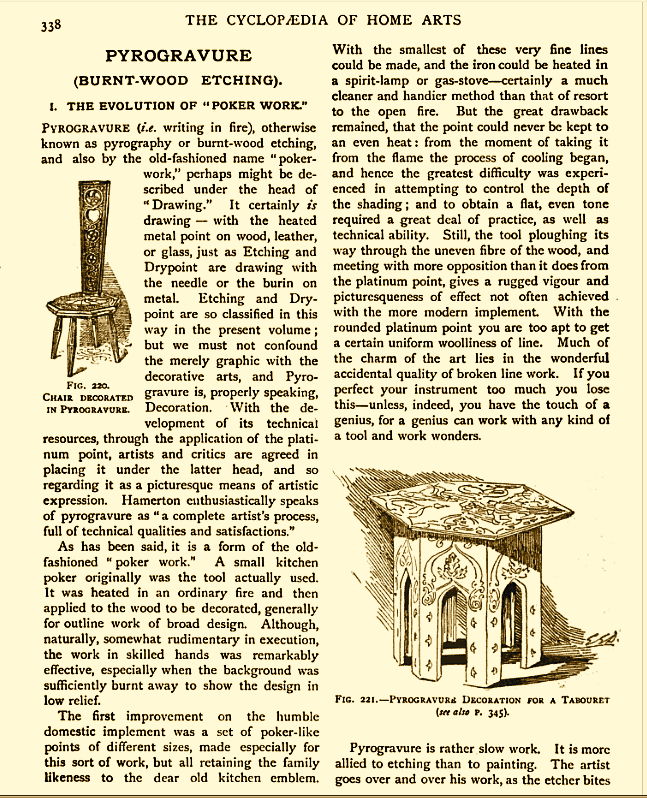 |
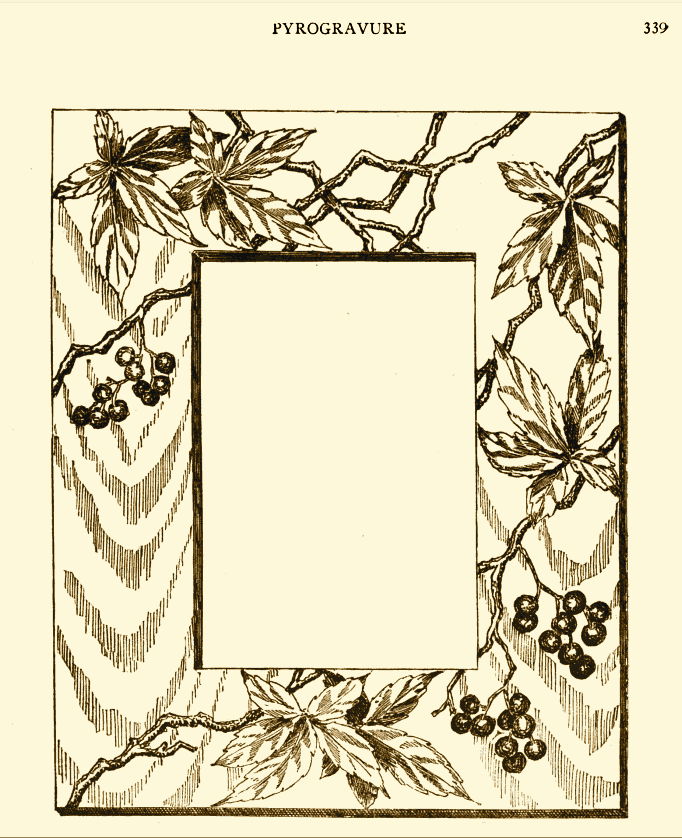 |
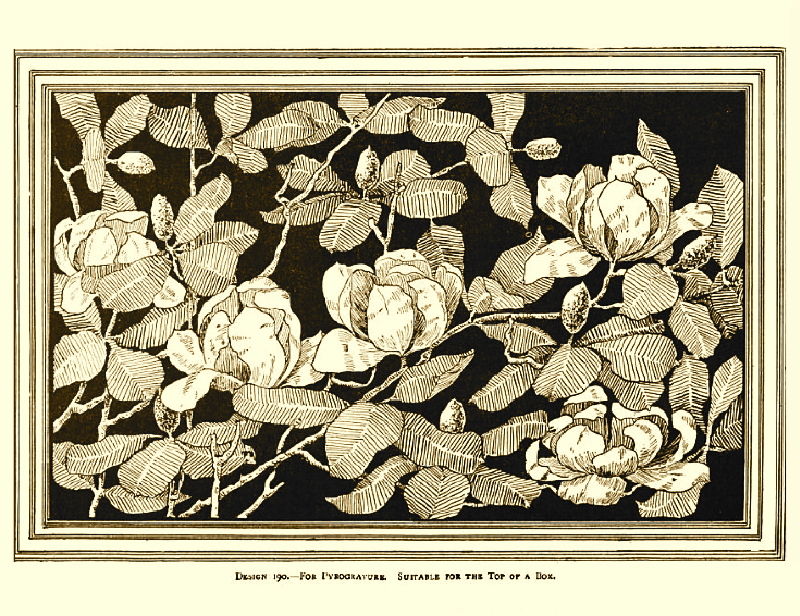 |
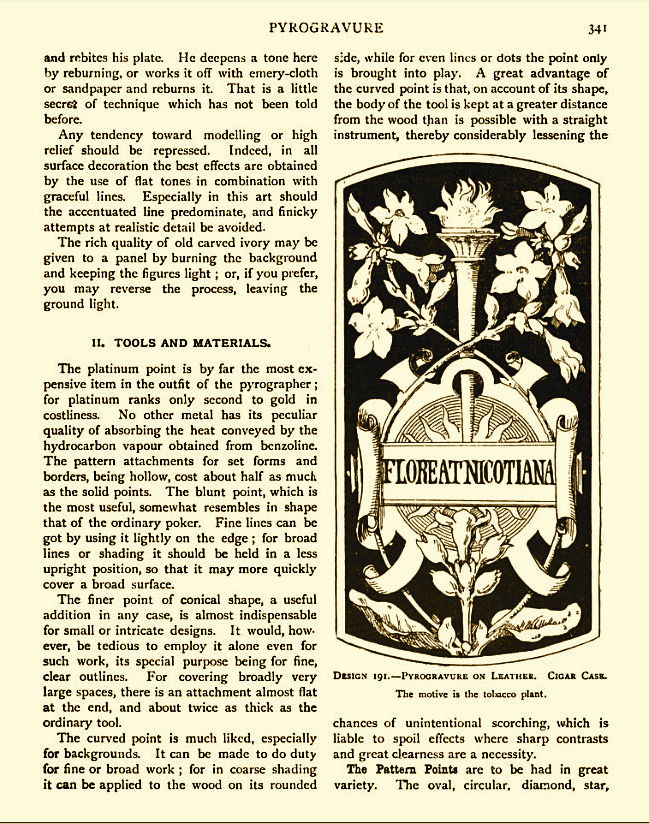 |
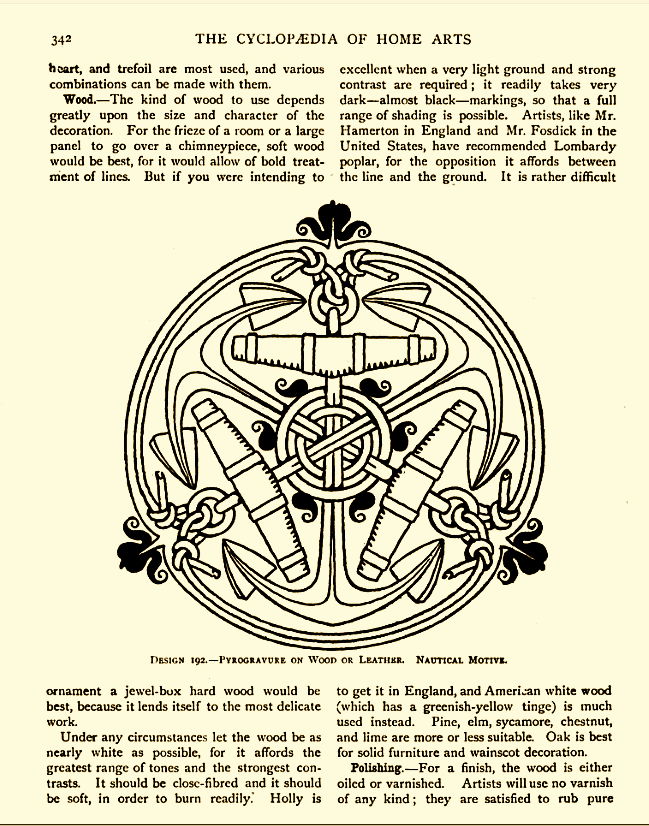 |
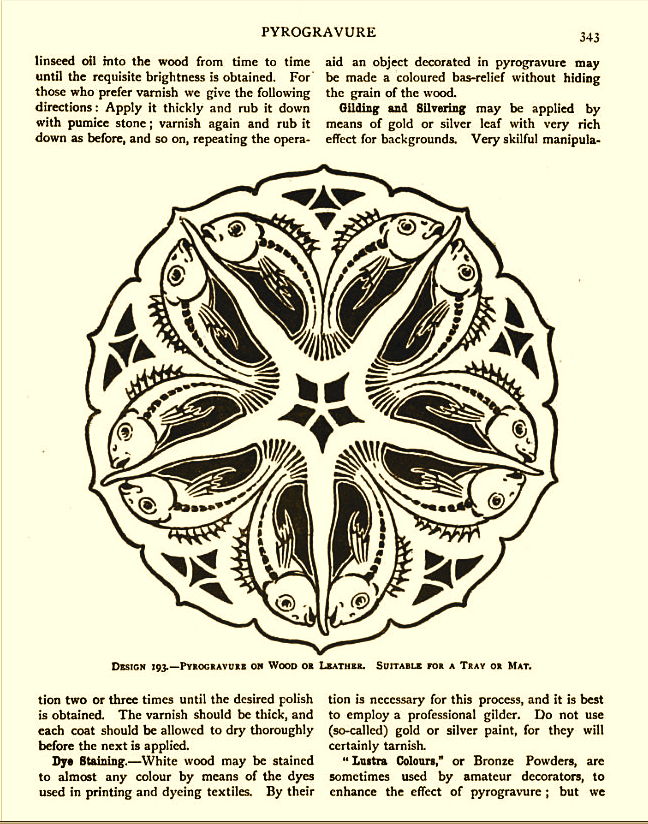 |
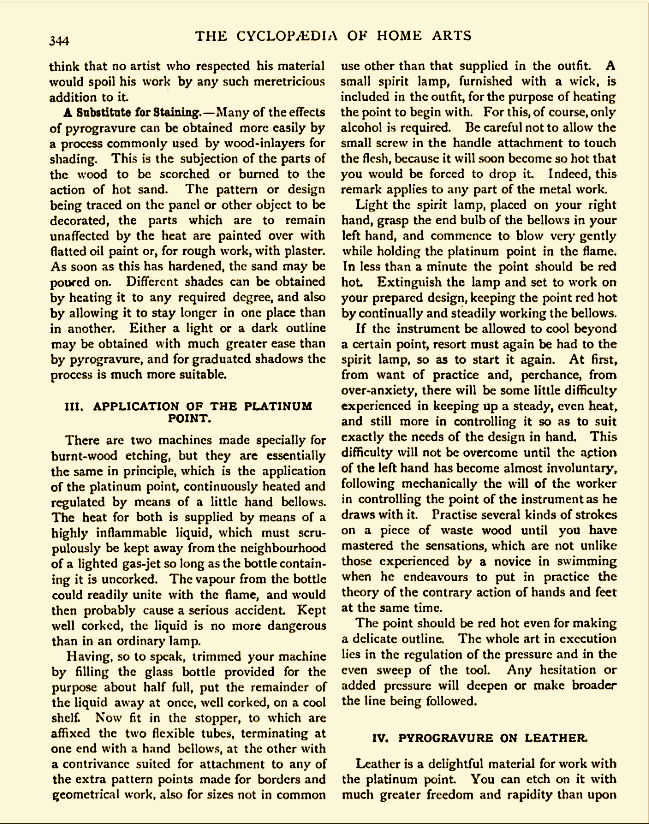 |
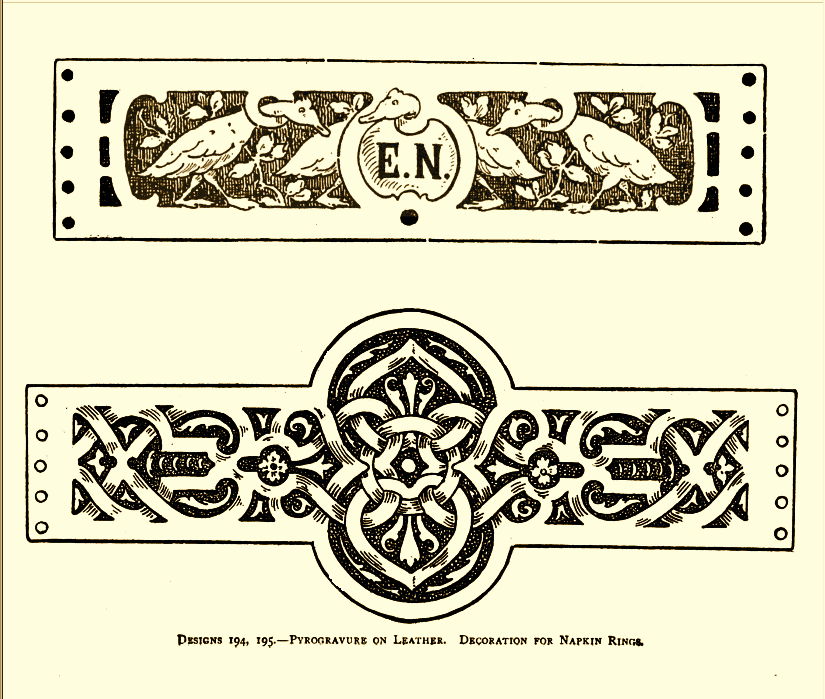 |
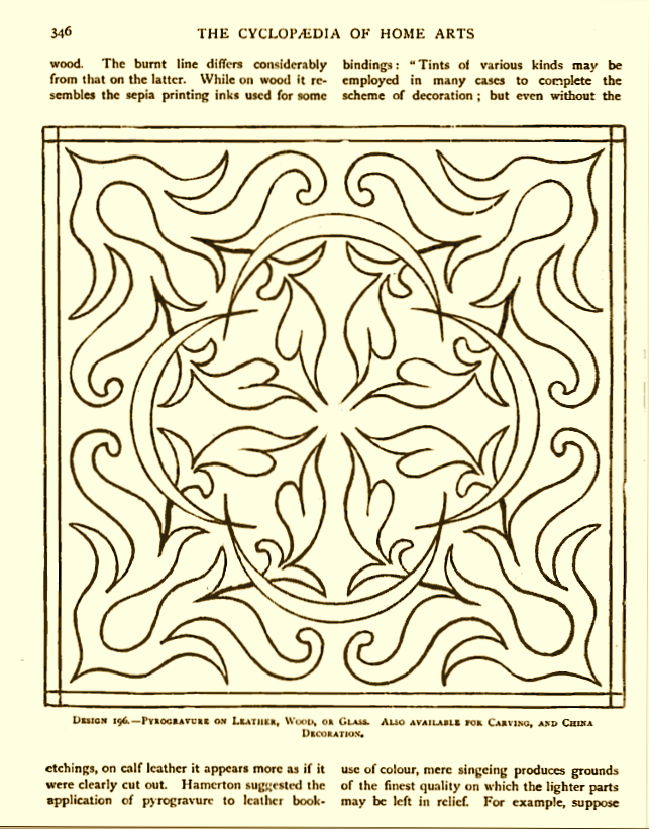 |
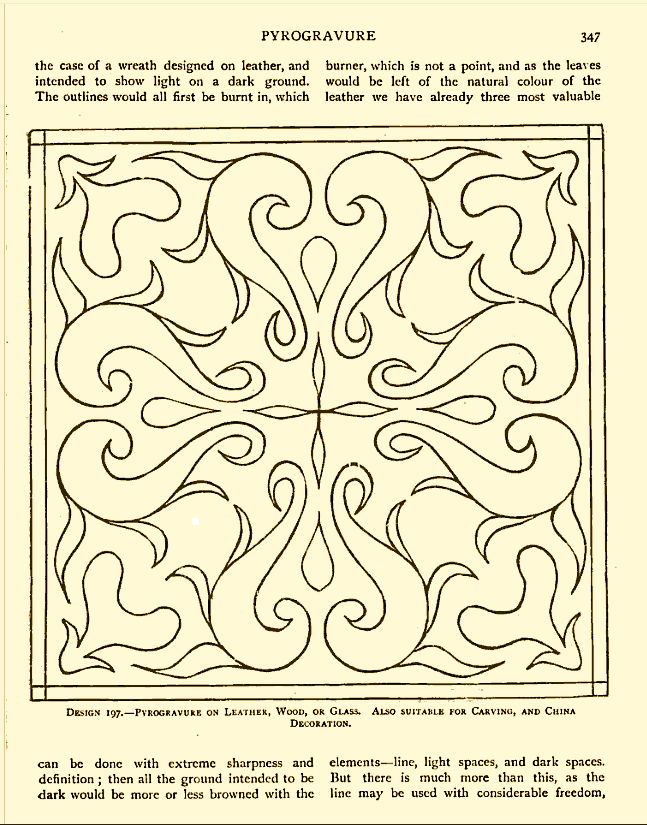 |
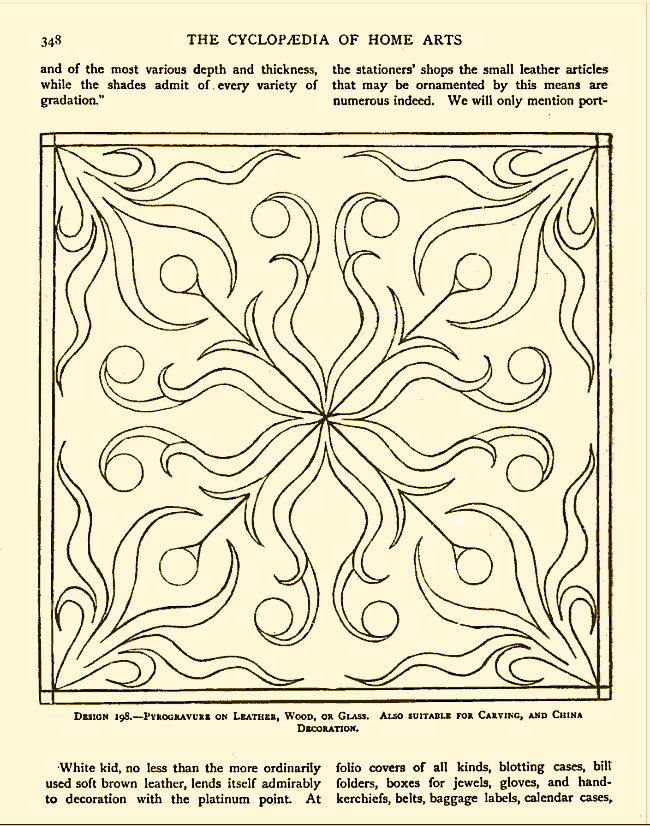 |
 |
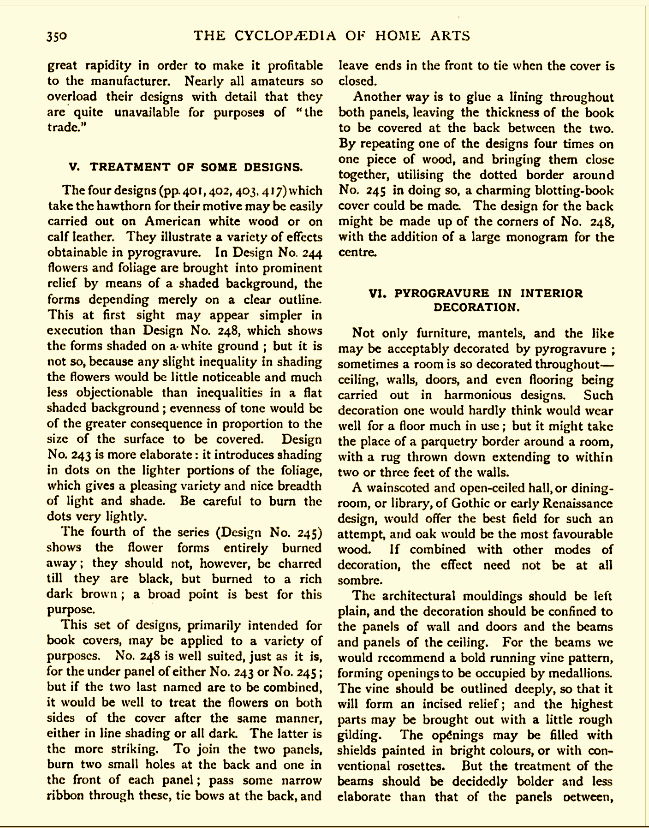 |
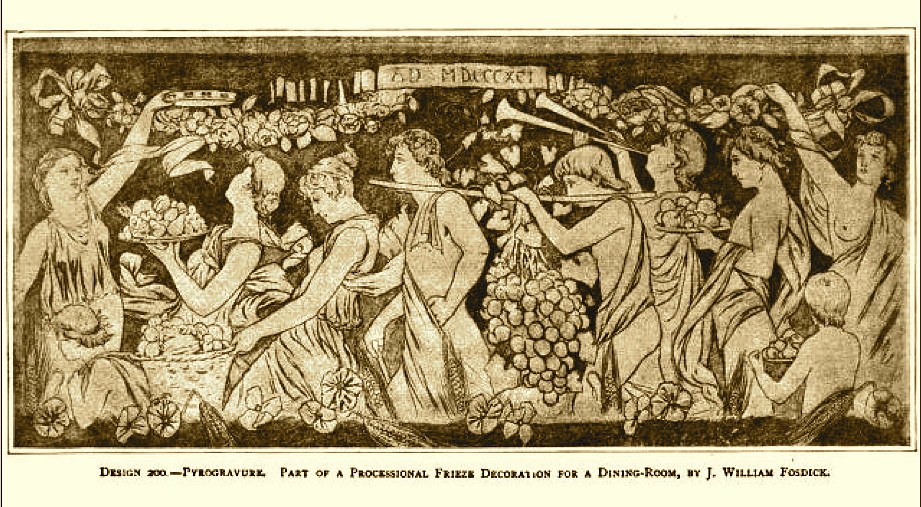 |
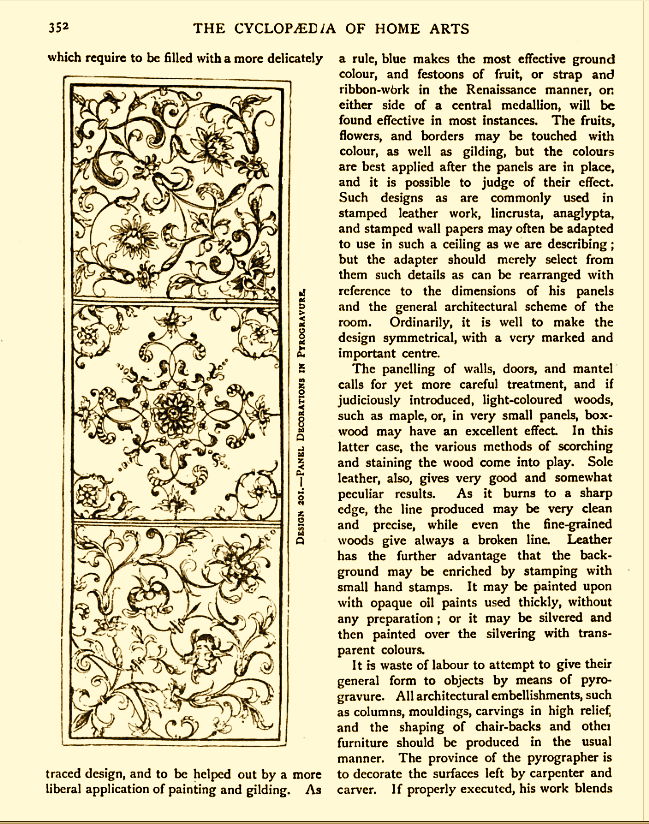 |
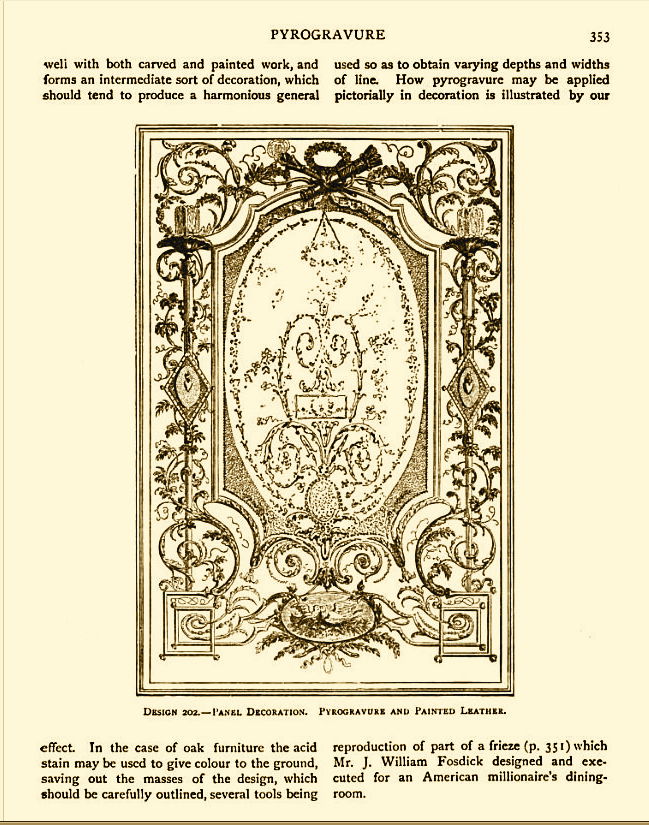 |
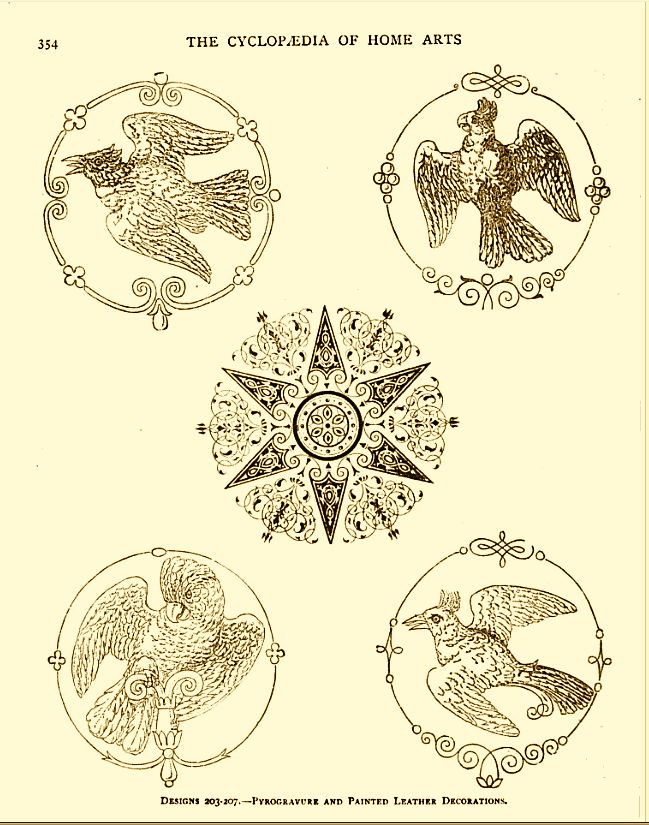 |
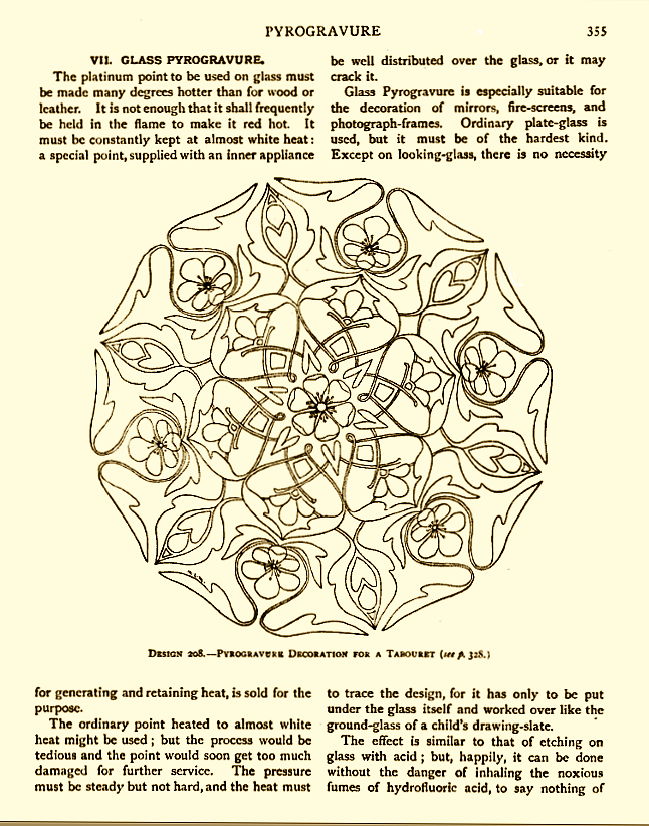 |
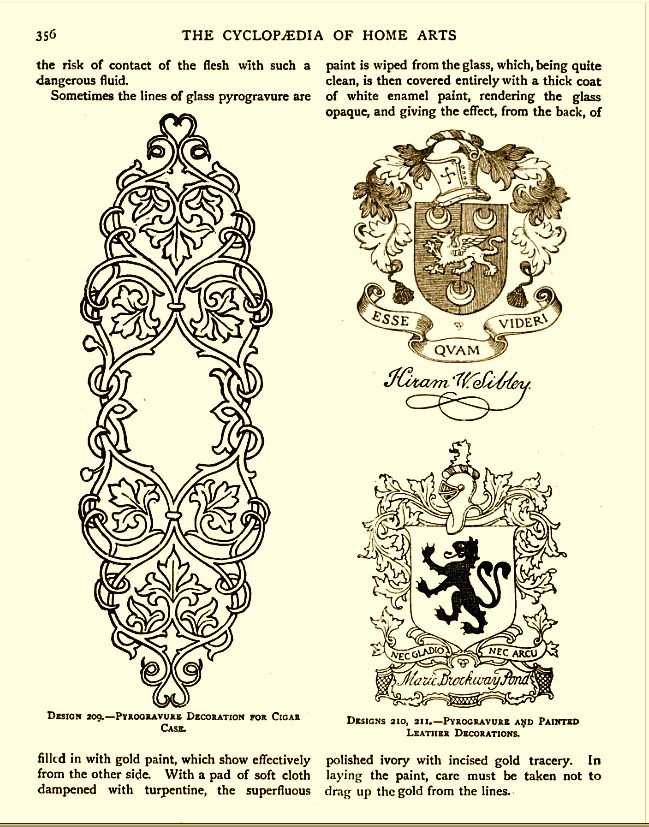 |
| PYROGRAVURE (BURNT-WOOD ETCHING).
I. THE EVOLUTION OF "POKER WORK." II. TOOLS AND MATERIALS. III. APPLICATION OF THE PLATINUM POINT. IV. PYROGRAVURE ON LEATHER. V. TREATMENT OF SOME DESIGNS. VI. PYROGRAVURE IN INTERIOR DECORATION. VII. GLASS PYROGRAVURE. Chapter, pp. 338–356, adapted from The home arts self-teacher or The cyclopaedia of home arts with over 500 ilustrations and designs Compiled and Edited by Montague Marks Published in London by C. Arthur Pearson Ltd., 462 pages, 1904. |
First published in 1898, this 1904 revision of the book, which was compiled and edited by Montague Marks, offers an extensive treatment of this topic in the 19-page chapter, exhibited here. It is sophisticated; offers an abundance of good designs; and discusses working on wood and leather, as well as glass, which is a technique rarely seen.
In the preface, Montague Marks credits Mrs. Emma Haywood as the main writer of the Pyrogravure chapter. The E-Museum exhibits an early article—Pyrography, or Burnt Wood Etching—written by her for Montague Marks's Art Amateur magazine, as well.
In addition to J. William Fosdick's being cited in the "Wood" subsection (II. Tools and Materials section) on p. 342, his design for a frieze—with a composition displaying ten figures—was illiustrated in another. It is described on p. 353 (VI. Pyrogravure in Interior Decoration section), as follows: "How pyrogravure may be applied pictorially in decoration is illustrated by our reproduction of part of a frieze (p. 351) which Mr. J. William Fosdick designed and executed for an American millionaire's dining-room."
Neither this frieze nor its owner is as yet known. If the date depicted in its scroll is significant, it implies the actual work was done in that year, i.e., 1891, or afterwards, which rules out the possibility that it was in the Villard house, although maybe not that it could have belonged to William T. Evans.
Three additional designs, designated as "also suitable for pyrogravure," are offered in subsequent chapters on the decoration of leather.
If you have either any questions to ask or any additional information to offer on this chapter by Emma Haywood or this book compiled and edited by Montague Marks, as well as any additional information on the frieze segment by J. William Fosdick, please e-mail the E-Museum Curator.
You are leaving the exhibit of
Montague Marks's
1904 book with Emma Haywood's chapter
PYROGRAVURE (Burnt-Wood Etching)
1. The Evolution of "Poker Work"
You can return to the
Antique Hall,
or the Book Store and E-Museum Library,
or continue on your tour to one of the following:
Pyrographic Art Exhibit Halls:
Antique Art
Portraits and Paintings
Decorative and Applied Art
Sculpture
Folk and Traditional Art
Children's Pyrographic Art
Special Pyrographic Art
The Book Store and E-Museum Library
Pyrography Tools and Techniques
Your questions and comments are welcome and appreciated. Please e-mail the E-Museum Curator.
Back to E-Museum Entrance homepage
© 2011 Kathleen M. Garvey Menéndez, all rights reserved.
22 February 2011. Updated 15–17 April 2012.

